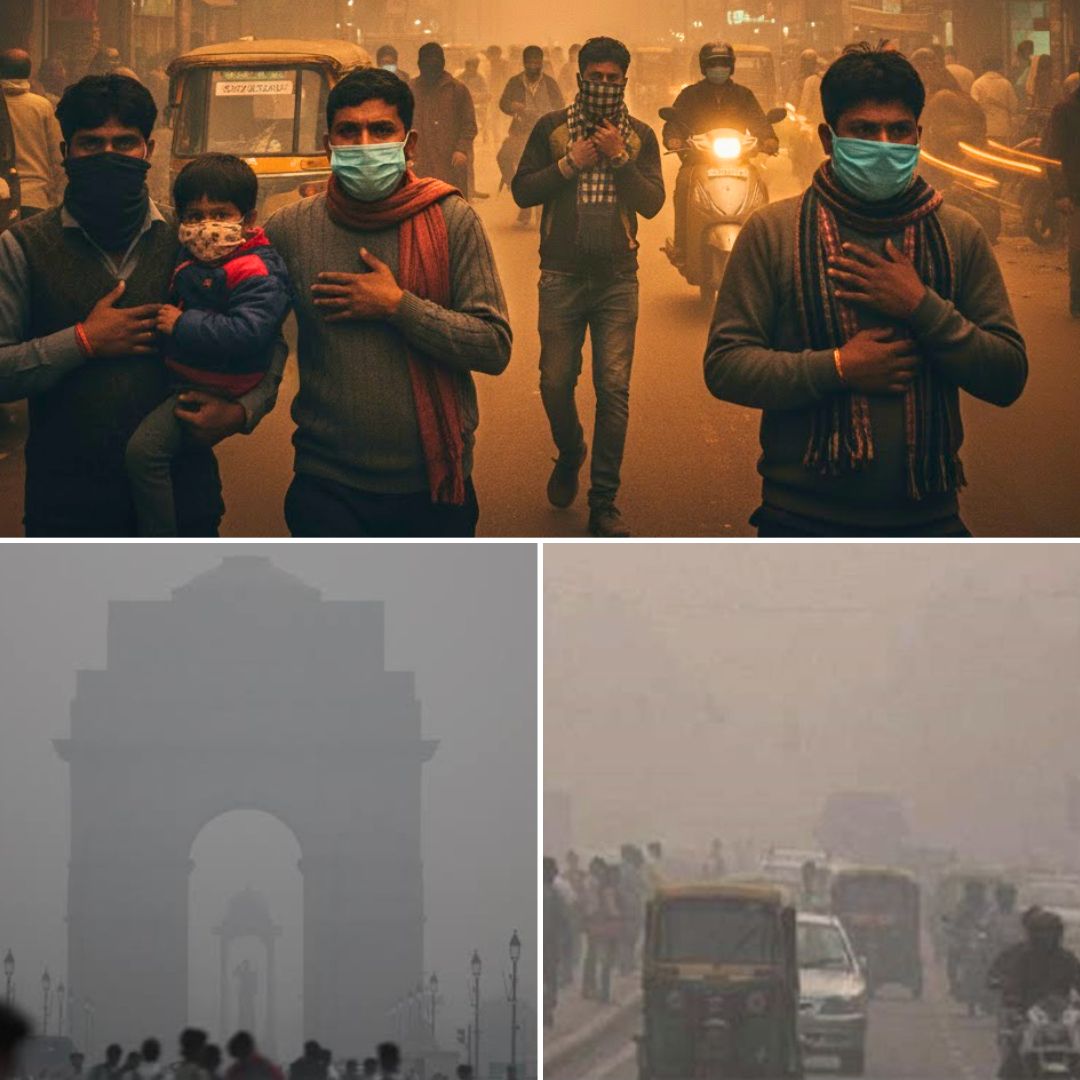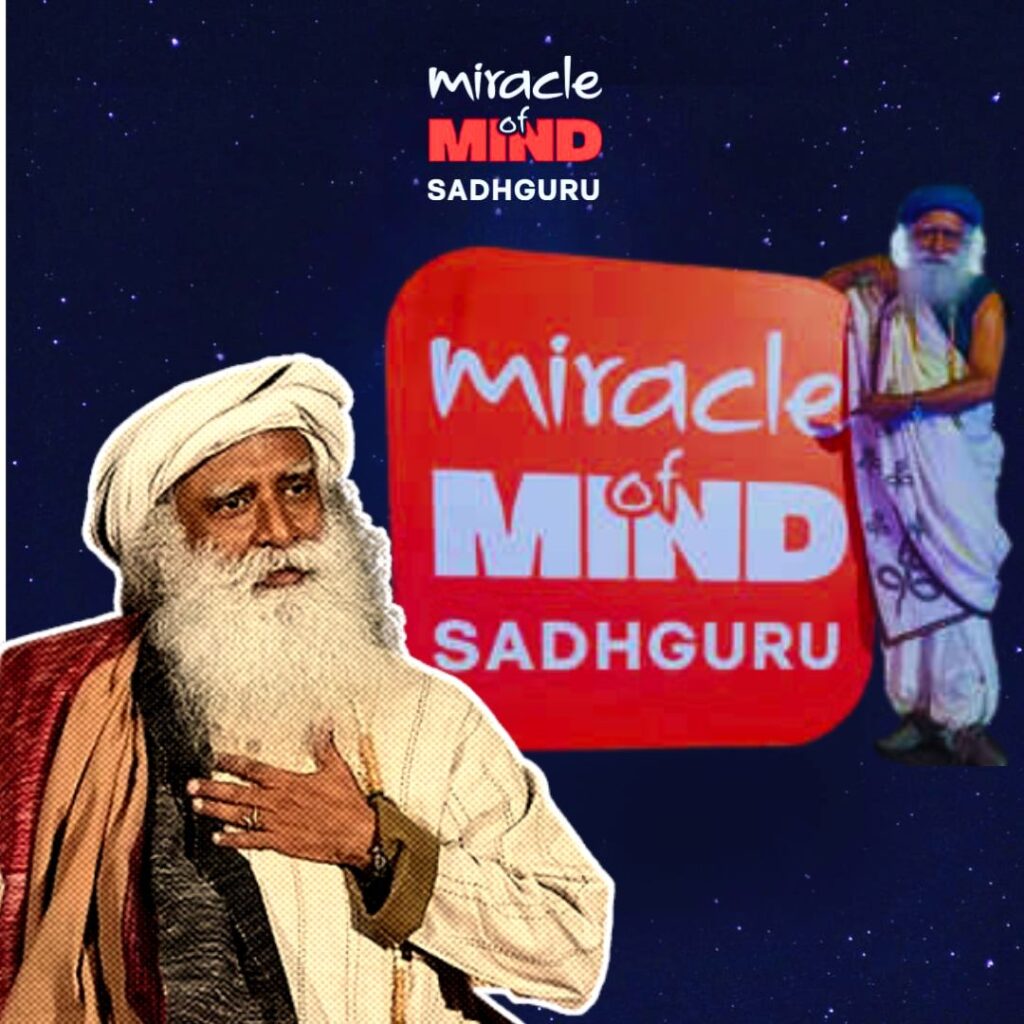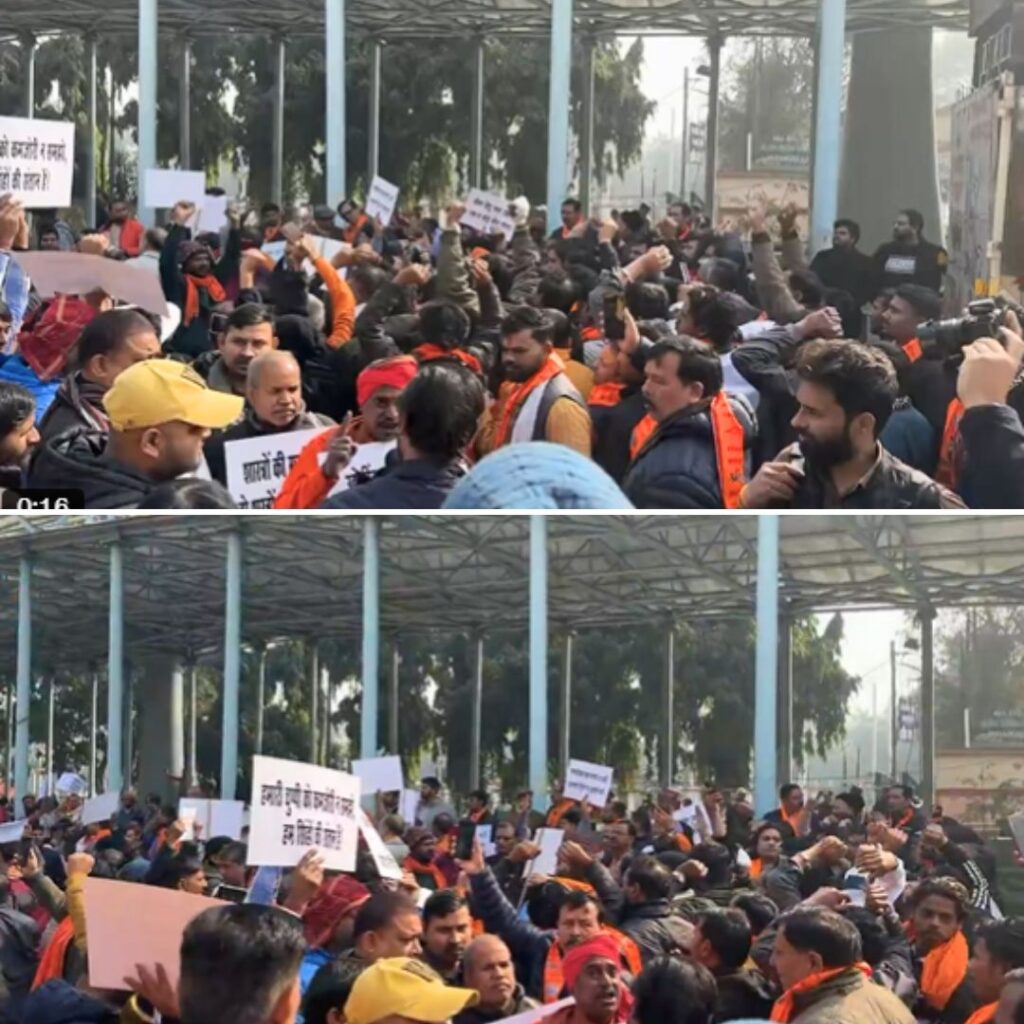Following the Diwali celebrations on October 20-21, 2025, Delhi experienced its worst air quality in years, with the Air Quality Index (AQI) reaching a hazardous 442 on October 21. This placed the city at the top of the global pollution charts, underscoring an annual environmental emergency.
As of October 22, the AQI remained dangerously high – hovering in the ‘very poor’ to ‘hazardous’ range (340-360 AQI), with particulate matter (PM2.5) concentrations reaching levels nearly 60 times the World Health Organization’s safe limit. Toxic emissions from firecrackers, crop residue burning in Punjab and Haryana, combined with vehicular pollution and unfavorable weather conditions, contributed to this severe smog condition.
Delhi’s Environment Minister Gopal Rai appealed to residents to follow pollution control guidelines under the Graded Response Action Plan (GRAP) stage II and urged collective community responsibility to combat this crisis.
A Toxic Cocktail: Firecrackers, Stubble Burning, and More
The post-Diwali pollution spike is driven primarily by a toxic mix of emissions. On Diwali night, firecrackers release granular pollutants laden with harmful sulfur and nitrogen oxides and heavy metals, which intensify Delhi’s particulate pollution. Despite the Supreme Court’s approval of ‘green crackers’ that reduce emissions by about 30%, enforcement loopholes and extended usage hours diluted their impact this year.
Simultaneously, stubble burning by farmers in Punjab and Haryana remains a significant contributor to Delhi’s smog, albeit with a reported 79% reduction in crop fires compared to last year. Experiencing low wind speeds and temperature inversions, pollutants stagnated in the atmosphere, worsening air quality and visibility.
Hospitals across the city reported increased respiratory distress cases, especially among vulnerable groups such as children, the elderly, and those with pre-existing conditions.
Weather and Policy: Lessons from 2025’s Diwali Pollution
Delhi’s meteorology played a decisive role in both the rise and subsequent moderation of pollution levels. PM2.5 concentrations peaked at an hourly average of 675 micrograms per cubic metre at midnight on October 21, before dropping rapidly by Tuesday afternoon, helped by shifting winds from northwest to east and an absence of very cold temperatures.
Experts noted that the early timing of Diwali this year, before the harsh onset of winter, allowed pollutants more vertical space to disperse, preventing longer stagnation. Nonetheless, the annual crisis continues with 0% of the city’s days in 2025 meeting WHO safe air quality standards, reflecting extreme health risks posed by chronic exposure to fine particulate matter.
Environmentalists stress that despite short-term meteorological relief, long-term solutions must target emission sources – cleaner fuels, greener transport, and sustainable farming methods – to prevent repeat catastrophes.
The Logical Indian’s Perspective
Delhi’s recurring air pollution crises are symptomatic of deeper challenges-urban planning failures, unsustainable agricultural practices, and a culture of ignoring environmental health until emergencies arise. True change requires empathy, dialogue, and action from all stakeholders: government, industries, farmers, and citizens alike.
Celebrations like Diwali must be reimagined in ways that respect our right to breathe clean air while honouring cultural traditions. The Logical Indian urges everyone to promote awareness, advocate for increased enforcement of pollution norms, and embrace sustainable lifestyles.












